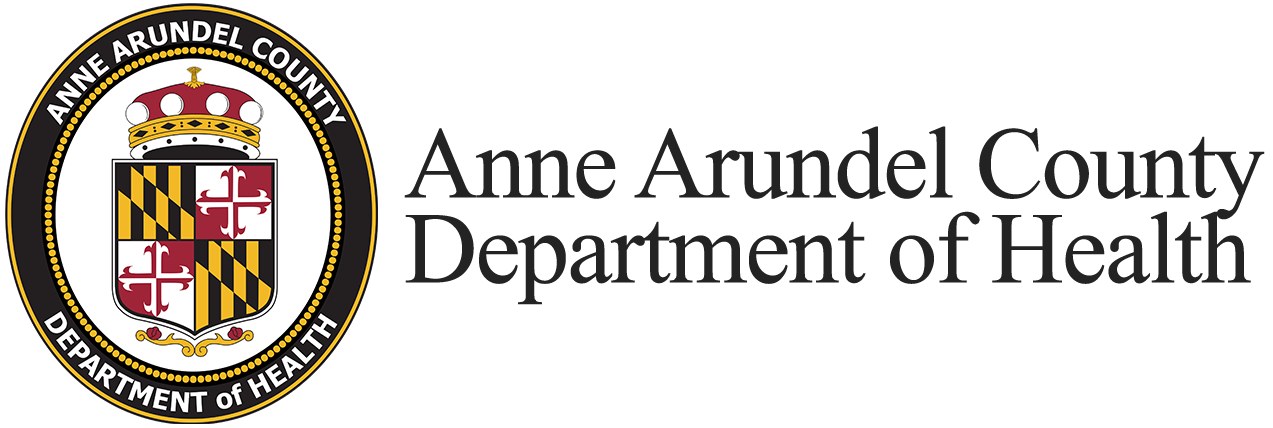The Link Between Tobacco and Cannabis
- Youth who use e-cigarettes are three times more likely to use cannabis than those who don't.
- In 2023, it was reported by the Truth Initiative that the co-use of cannabis and tobacco is more common than using both substances by themselves among 12-17-year-olds.
- Vaping cannabis produces stronger effects than smoking cannabis and is more likely to cause negative side effects such as anxiety and paranoia.
- It has also been linked to serious lung illness in nearly 3,000 cases and at least 68 deaths.
- The Department of Health offers more tobacco and cannabis facts.
- Stanford Reach Lab: Tobacco and cannabis awareness and prevention toolkits and curriculums offer additional educational content, lesson plans, activities and more.
For Students
What Are You Really Inhaling?
- It's Not Just Water Vapor: Debunking the myth that vape aerosol is harmless.
- A Look Inside:
- Nicotine: Nicotine is a highly addictive natural organic compound found in the tobacco plant. It is a psychoactive drug that acts as a stimulant in the central nervous system. Most vapes contain nicotine to hook users. Typically one pod or cartridge contains as much nicotine as a pack of cigarettes.
- THC: THC is the mind altering component in cannabis that causes the “high” feeling.
- Cannabis is 4-7 times more potent than previous years
- In 2025, it's pretty common to find high-potency THC vaping products out there. They've been linked to several health concerns, like making it easier to get dependent and making mental health issues worse.
Harmful Chemicals: Many e-liquids also contain flavorings which are made up of chemicals that can be harmful when heated and inhaled by the user.
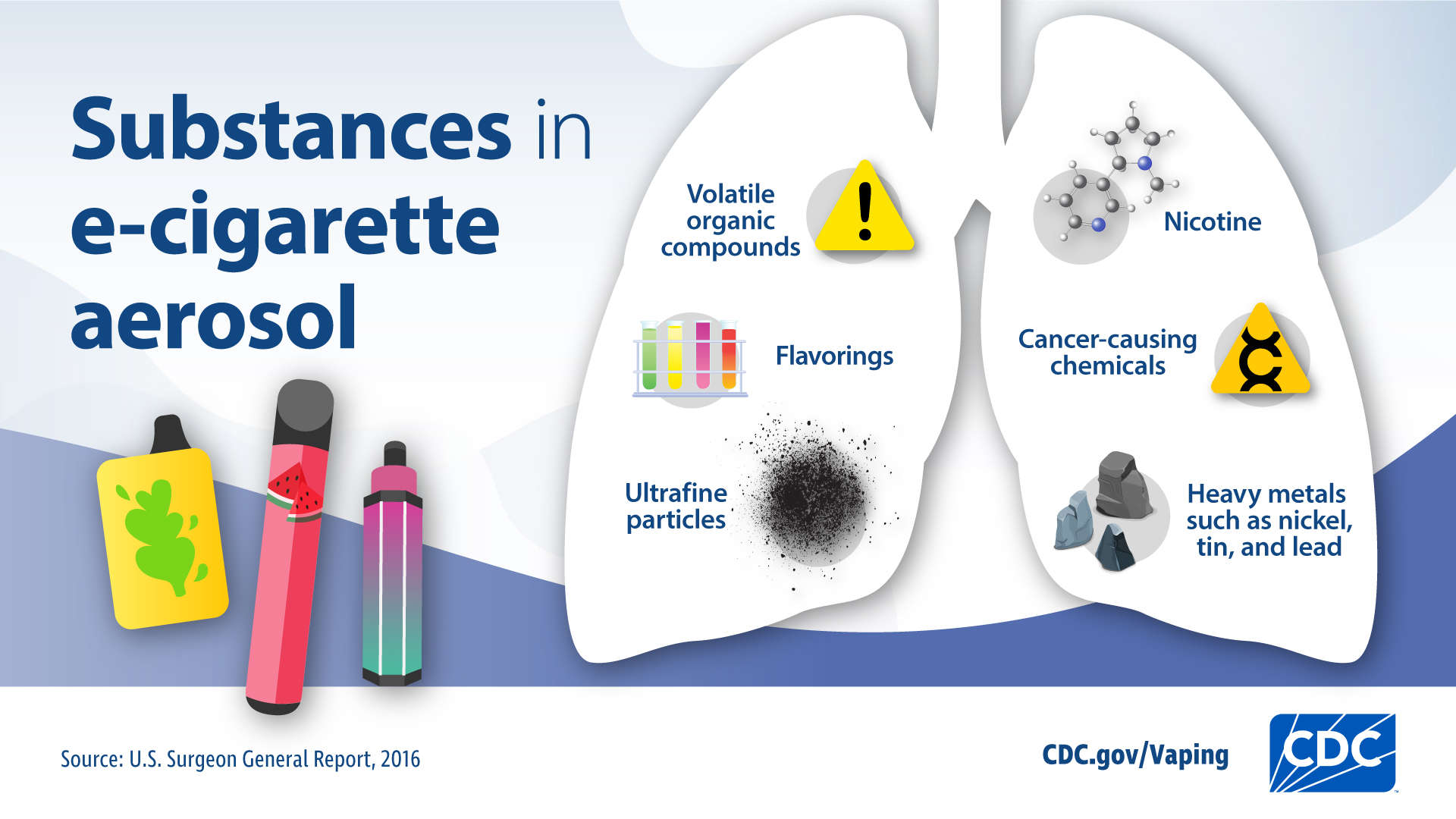
The Impact on Your Brain and Body
Whether you are vaping nicotine or cannabis concentrates, both have similar health effects on your body. Keep reading to find out more about those effects:
- Your Developing Brain:
- The brain isn’t fully developed until around age 25. Using nicotine and THC at a young age can permanently alter brain development, affecting memory, mood regulation, concentration, and impulse control.
- Your Lungs:
- Vaping produces an aerosol containing harmful chemicals, such as heavy metals,diacetyl, and other additives like nicotine and THC. These chemicals irritate and inflame the lungs, leading to coughing, wheezing, chest pain and shortness of breath.
- EVALI (e-cigarette, or vaping, product use-associated lung injury) is a serious and sometimes fatal lung condition that has been linked to the use of e-cigarettes and vaping products. It was first identified in August 2019 and by November 5, 2019, there were over 2000 cases in 49 states, D.C. and the U.S. Virgin Islands and 39 deaths.
- Your Mental Health:
- Many young people view vaping as a way to relieve their stress, however research shows that vaping nicotine and/or THC can actually worsen mental health issues such as anxiety, depression, and stress.
- It’s important for youth to identify alternative healthy coping strategies to dealing with stress and anxiety such as going for a walk, listening to their favorite music, meditation or talking through their problems with a trusted friend or family member.
- Many young people view vaping as a way to relieve their stress, however research shows that vaping nicotine and/or THC can actually worsen mental health issues such as anxiety, depression, and stress.
- Your Developing Brain:
Impacts on the Environment
- Vaping causes significant harm to the environment by generating plastic, electronic, and toxic waste.
- Improperly discarded e-cigarettes eventually break down and leach harmful chemicals and microplastics into the environment polluting the land and water. This also poses a risk to wildlife and outdoor pets, as nicotine is toxic to animals.
- Because e-cigarettes contain lithium batteries, there is no safe or easy way to dispose of them at home. To properly discard e-cigarette devices, the FDA advises they should be brought to an approved household hazardous waste collection site, a designated battery recycling facility, or a store that offers take-back programs to ensure they are handled safely and prevent fires or environmental contamination.
- Vaping causes significant harm to the environment by generating plastic, electronic, and toxic waste.
Resisting the Pressure
- Targeting Teens: Expose how the industry uses flavors and slick marketing to attract young people.
- Both the tobacco and cannabis industries and media utilize alluring advertisements and marketing trends, including celebrity endorsements, to attract young people. They employ deceptive messaging to normalize tobacco and cannabis use, making it appear enjoyable and safe, often through eye-catching packaging and candy-like products. This strategy aims to secure younger consumers and increase profits.
- How to Say No: Provide practical tips and sample phrases for turning down a vape.
- Targeting Teens: Expose how the industry uses flavors and slick marketing to attract young people.
Ready To Quit? We've Got Your Back
- Signs of Addiction: A simple checklist to help teens recognize nicotine or THC dependence.
Cannabis:
Checklist: Signs of Potential Cannabis Problem
- Loss of Control: Using more cannabis or using it for longer than intended.
- Social Impairments: Not engaging in important work, social activities, hobbies, or recreational activities due to cannabis use.
- Inability to Stop: Wanting to quit or reduce cannabis use but being unable to do so.
- Ignoring Risks: Continuing to use cannabis despite knowing the risks and dangers associated with it.
- Cravings: Experiencing strong urges to use cannabis when not using it.
- Worsening Issues: Using cannabis even though it worsens existing physical or mental health problems.
- Life Impairments: Struggling to maintain performance at home, work, or school because of cannabis use.
- Tolerance Building: Needing to use more cannabis over time to achieve the same effects.
- Disregarding Impact: Continuing to use cannabis despite its negative impact on relationships and daily life.
- Withdrawal Symptoms: Experiencing withdrawal symptoms when not using cannabis or when trying to stop.
- Excessive Focus: Spending too much time and resources on cannabis use.
If you or someone you know resonates with several of these signs, it may be helpful to seek support and guidance.
- How to Quit
For Parents
Understanding the Vaping Landscape
- What is Vaping?
- Vaping is the act of inhaling and exhaling an aerosol mist produced by an electronic cigarette (e-cigarette) or similar device. These devices heat a liquid solution, typically containing nicotine and/or THC, flavorings, and other chemicals, into a vapor that is inhaled by the user.
- Types of E-cigarettes
Disposable E-cigarettes: Single use e-cigarette products that cannot be refilled but may be rechargeable. They are the most commonly used type of e-cigarette product on the market including brands like Breeze Pro, Hyde, Puff Bar, EB Design (formerly Elf Bar) and Kangvape.
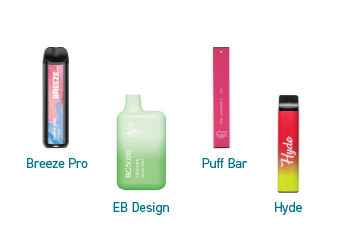
Closed Pod Devices: These products use disposable, prefilled pods containing nicotine e-liquid that are inserted into a rechargeable base or body. Examples of popular closed pod devices include JUUL, Vuse, NJOY, Blu, and Glas.
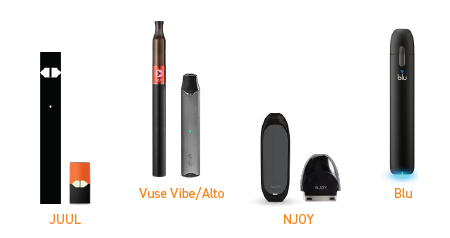
Refillable Devices: These products have tanks or pods that can be refilled with e-liquid and the pods/tank. They are more customizable by the user and are often used to create larger clouds and perform tricks. Types of refillable devices include box mods, Suorin, and NOVO.
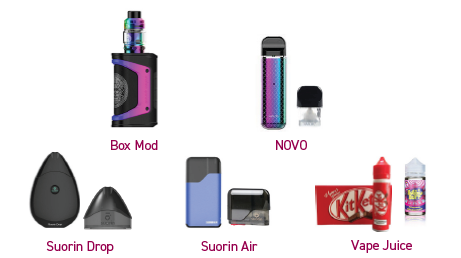
- THC Vape: A type of e-cigarette that has concentrated cannabis oil that is heated and turned into an aerosol.
- Dab or Wax Pens: Dabbing is when an extremely concentrated THC wax is heated and turned into an aerosol, then inhaled.
- What is Vaping?
How to Spot the Signs
Vaping any substance can be hard to detect. Signs of vaping are similar for both THC and nicotine, but there are notable differences.
- Common Signs for Both THC and Nicotine:
- Increased thirst Coughing Unexplained sweet scents
- Physical Signs Specific to Nicotine:
- Frequent nosebleeds
- Physical Signs Specific to THC:
- Bloodshot eyes
- Dry mouth
- Increased Appetite
- Common Behavioral Signs for Both THC and Nicotine:
- Increased secrecy or irritability
- Changes in friends
- Decline in grades
- Paraphinalia to look out for both THC and Nicotine:
- Pods
- Chargers
- Empty disposable vapes
- THC specific:
- Gel jars that contain wax (dabs)
- Cartridges filled with oil (THC)
- Common Signs for Both THC and Nicotine:
The Parent's Guide: How to Talk to Your Teen
- Know the Facts:
- Stay informed, know the potential effects and laws to be able to talk to your teen.
- Use resources like Center for Disease Control and Prevention (CDC), Truth Initiative, and the Stanford REACH Lab.
- Stay informed, know the potential effects and laws to be able to talk to your teen.
- Start the Conversation:
- Start conversation with kids at a young age and keep the conversation going as they get older.
- Find the right time and place to bring it up.
- Try not to lecture, yell or be judgemental.
- Listen more, talk less.
- Sample conversation
- Add picture link
- Answer their questions:
- Be open, honest and non-judgmental.
- It’s ok not to have all the answers. You can figure this out together!
- Know the Facts:
What to Do If Your Teen is Vaping
- First Steps: Express concern and support, not anger.
- Getting Professional Help: Talk to your pediatrician, a school counselor, or a therapist.
- Parent Resources:
- Parents Against Vaping E-cigarettes (PAVe) is a grassroots community of passionate parents and concerned individuals committed to protecting children from the dangers of vaping and other flavored tobacco use.
- The Truth Initiative is the nation’s largest nonprofit public health organization dedicated to preventing youth and young adult nicotine addiction and empowering quitting for all.
- American Lung Association - Talk About Vaping offers a comprehensive step-by-step guide for parents wanting to start the conversation around vaping with their children.
- CDC - E-cigarettes and Youth: What Parents Need to Know offers information about e-cigarettes parents and caregivers can use when talking with their children about vaping.
- SAMSHA - Talk They Hear You - The "Talk. They Hear You." Underage Drinking Prevention National Media Campaign empowers parents and caregivers to talk with children early about alcohol and other drug use.
FAQ: Frequently Asked Questions
While vaping is generally considered less harmful than traditional cigarettes, as it exposes users to fewer toxins at a lower level than cigarette smoke, it is still not safe and carries its own significant health risks.
While vaping cannabis (THC) may expose users to fewer toxins than smoking it due to the lower heating temperatures, it is not risk-free and carries significant health risks. Current research indicates that vaping cannabis can still lead to lung injury, addiction, and worsened mental health issues.
The potency of THC in cannabis has significantly increased over time. In the 1990s, THC content averaged around 4%, but it has risen dramatically, with dabs and vaping devices now containing upwards of 90% THC. This heightened potency in cannabis products is linked to an increased likelihood of dependency, cognitive impairment, and other adverse health effects.
E-liquid or E-juice is used in open/refillable systems and comes in a variety of flavors. Vape juice typically contains nicotine and/or THC is made of vegetable glycerin or propylene glycol, water and flavorings. There are more than 7,000 e-juice flavors on the market including menthol, fruit, candy, coffee, and alcoholic beverage flavors.
- Yes, most vapes contain nicotine which is one of the most addictive substances in the world. Over time, the brain and the body become dependent on nicotine making it difficult to quit. Because of this, people who try to quit may experience withdrawal symptoms, discomfort, and the persistent urge to vape.
- Frequent and heavy cannabis use can lead to addiction, specifically Cannabis Use Disorder, which research shows affects 3 in 10 users. Vaping cannabis may heighten this risk of addiction due to the higher concentration of THC compared to smoking.
Because vaping is still relatively new, many of the long-term effects are not known. However, research is ongoing and studies have shown that vaping is linked to permanent lung damage, irreversible heart and cardiovascular issues, and significant damage to brain development and oral health.
- Flavored vapes are often considered more dangerous because the flavor chemicals, while safe to eat, become toxic when heated and inhaled, potentially causing lung damage.
- Look into THC flavored vapes.
Popcorn lung, also known as bronchiolitis obliterans, is a rare lung condition that causes permanent damage to the small airways (bronchioles) in the lungs. Some buttery or creamy flavored e-liquids use a chemical called diacetyl, which can cause inflammation and scarring of the bronchioles, leading to popcorn lung. Symptoms include persistent cough, wheezing, chest tightness and shortness of breath.
Yes, vaping THC is different from nicotine. Nicotine is an addictive chemical found in tobacco and vaping devices whereas THC is the psychoactive compound that is found in cannabis.
- You cannot tell the difference between a vape containing nicotine and one containing THC just by looking at them. However, indicators such as the color and consistency of the e-liquid, the smell, and labels on the packaging can help.
- THC will often appear dark and honey-like in color and consistency.
- THC can have a skunk-like smell while nicotine vapes have sweet, fruity, or bubblegum like scents.
- It’s important to note that packaging and labeling can be misleading. Through lab testing, many products on the market that are labeled as “nicotine-free” have been found to contain nicotine.
- THC
- July 1, 2023 was the beginning of individuals having to be at least 21 years of age to legally possess small amounts of cannabis.
- According to the Maryland Cannabis Administration (MCA) a person under 21 years of age may not possess or use non-medical cannabis. Possession of 2.5 ounces or less (a civil use amount) may result in a fine, a court order to attend drug education programming, and referral for assessment and/or treatment of substance use disorder. Possession of more than 2.5 ounces may result in criminal penalties.
- July 1, 2023 was the beginning of individuals having to be at least 21 years of age to legally possess small amounts of cannabis.
- Nicotine
- In December 2019, the "Tobacco 21 law," or T21, went into effect raising the minimum age to purchase tobacco products, including electronic smoking devices, from 18 to 21 nationwide.
- In Maryland, the penalty for underage sale of tobacco products falls on the retailer, not the buyer. Youth purchase and possession laws have not been shown to be effective in reducing youth access and may unfairly target certain groups, including minority groups. Retailers found to be noncompliant may face fines, license suspension or expulsion.
- The Preventing Online Sales of E-Cigarettes to Children Act (2021) amended the PACT Act to ban the U.S. Postal Service from delivering vaping products to consumers. Online retailers must also register with federal and state authorities, verify age, and require an adult signature upon delivery.
- Many states and counties, including Maryland, have expanded their smoke-free air laws to include e-cigarettes, prohibiting vaping wherever smoking is banned.
Glossary of Vaping Terms
- Aerosol: The cloud of fine particles inhaled from a vape.
- Blanks: Empty cartridges a user can fill with the e-liquid of their choice.
- Cartridge/Pod: A disposable container pre-filled with e-liquid.
- Clouds: The large plumes of aerosol exhaled by users.
- JUUL: A popular brand of pod-based e-cigarette.
- Mod: A larger, more powerful, and customizable type of vape device.
- Nicotine: A highly addictive, colorless, psychoactive drug found naturally in the tobacco plant.
- Nic Sick: Feeling nauseous, dizzy, or getting a headache from too much nicotine.
- Throat Hit/Kick: The tingling feeling in the back of the throat when vaporizing e-liquid that contains nicotine.
- Zero-Nic: E-liquid that is advertised as having 0% nicotine (though studies have found some still contain it).
- Zero/Stealth Mode: When a user does not release the e-cigarette vapor after taking a puff in an attempt to hide their use.
- EVALI: E-cigarette or vaping product use-associated lung injury. The CDC created the term in response to a multi-state outbreak of severe lung illnesses linked with using e-cigarette and vaping products. These cases were first identified in August 2019 and by November 5, 2019, there were more than 2000 cases in 49 states, D.C. and the U.S. Virgin Islands and 39 deaths.
Glossary of Cannabis Terms
- Cannabis: A word to describe any part from the cannabis plant that includes the buds, flowers, leaves or stems. We encourage the word cannabis because it is science backed and a neutral term.Cannabis can be commonly known through slang words; marijuana, mary jane, dope, grass, pot, ganja, hash.
- Cannabidiol (CBD): is a compound found in cannabis. While it does not cause the "high" associated with cannabis, it is not a risk-free product.
- Tetrahydrocannabinol (THC): is the main psychoactive ingredient in cannabis which is what makes you feel “high”.
- Spice/K2: Spice and K2 are common names for synthetic cannabinoids, which are designed to mimic THC, the psychoactive ingredient in cannabis. Many different types of synthetic cannabinoids exist.
- Dab or Wax pen: An e-cigarette typically used to vaporize cannabis concentrates with THC levels that can be above 90% THC.
- Weed pen: An e-cigarette typically refers to a prefilled cannabis oil pod or cartridge that is vaporized.
- Greening out: Describes a temporary cannabis overdose, often experienced after consuming high-THC concentrates. Symptoms include nausea, vomiting, dizziness, anxiety, sweating, and in some cases, panic attacks or hallucinations.
- E-liquid/E-juice: Vape juice is used in open/refillable systems and comes in a variety of flavors. Vape juice typically contains nicotine and is made of vegetable glycerin or propylene glycol, water and flavorings. There are more than 7,000 e-juice flavors on the market including menthol, fruit, dessert, coffee, alcoholic beverage and cigar flavors.
- Dank Vapes: The “most prominent in a class of largely counterfeit brands, with common packaging that is easily available online and used by distributors to market THCcontaining cartridges,” according to a Centers for Disease Control and Prevention report on e-cigarette or vaping product use-associated lung injury.
Resources and Get Help Now
- National Quit-Lines & Programs:
- Smokefree.gov: Resources from the National Cancer Institute.
- TruthInitiative.org: Text-to-quit programs and educational campaigns.
- American Lung Association: Information and support for quitting smoking and vaping.
- Marijuana Anonymous
- For Local Support:
- For information on free smoking cessation classes in the county, to order a free quit kit, or for more information about tobacco, please visit AAHealth.org/quitsmoking.
- The Maryland Tobacco Quitline: If you are ready to quit, visit smokingstopshere.com or call 1-800-QUIT-NOW (1-800-784-8669) or text READY to 34191.
- Downloadable Materials:
- Fact sheets, conversation guides for parents, and posters for schools.
- BeCannabisSmart
- Truth Initiative
- Stanford University
- Fact sheets, conversation guides for parents, and posters for schools.
